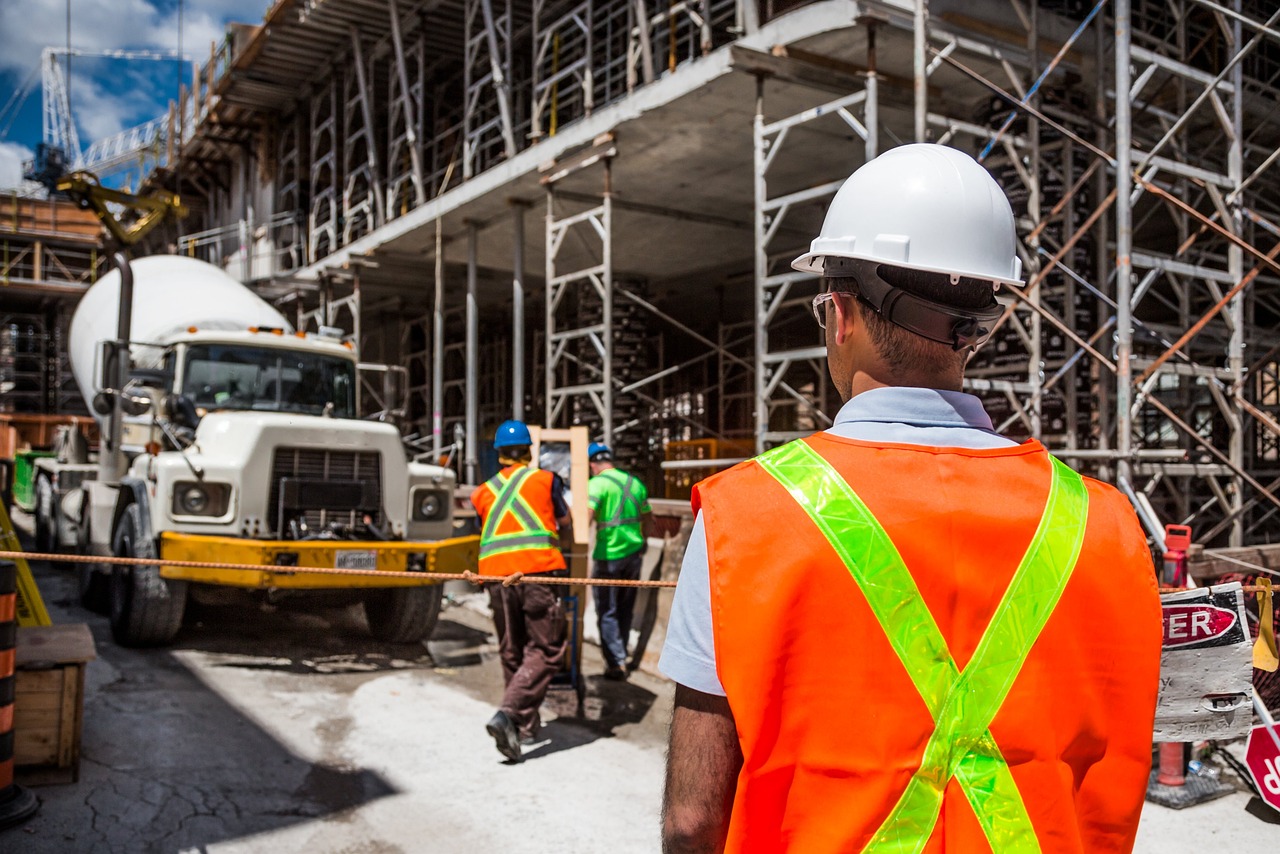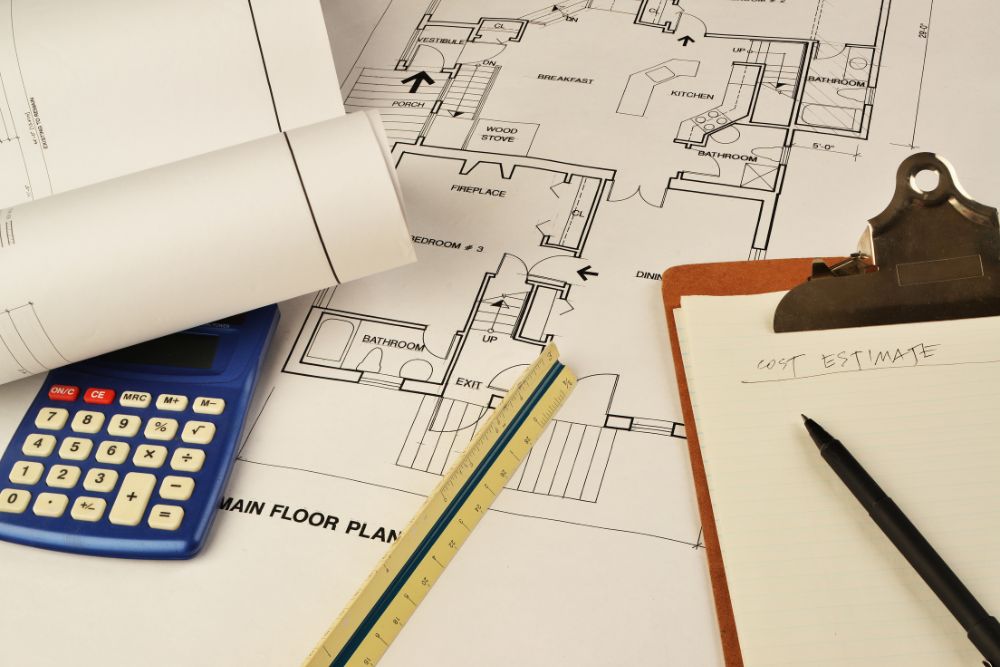Did you know that 82% of construction companies fail not because they’re unprofitable, but because they mismanage their cash flow? It’s a common problem in the industry. When money doesn’t arrive on time to cover expenses, everything starts to fall apart, projects slow down, bills pile up, and operations become unstable.
That’s why understanding how to calculate construction company cash flow is so important. Proper cash flow management helps you keep track of what’s coming in and going out, so you can pay your team, handle material costs, and keep your business running smoothly.
In this guide, we’ll explain what construction cash flow really means, how to calculate it accurately, and what you can do to improve it in your business. By the end, you’ll know exactly how to stay on top of your cash and avoid the money gaps that cause so many construction companies to fail.
What Is Construction Cash Flow?
In construction, money doesn’t always move the way you expect. You might pay for materials and labor early in the project, but get paid by your client weeks or even months later. That gap is what makes cash flow such a big deal.
Cash flow simply means the movement of money in and out of your business. It shows what’s coming in from client payments and what’s going out for things like materials, equipment, and payroll.
When more money comes in than goes out, your business has positive cash flow, and that’s a good sign. But if your expenses are higher than your income, that’s negative cash flow, and it can quickly cause trouble with bills, suppliers, or payroll.
Cash flow in construction is trickier than in other businesses because payments often depend on project milestones or retainage. So, even when you’re doing well on paper, you might still face a cash shortage if payments are delayed.
That’s why knowing how to calculate construction company cash flow matters so much. It helps you see what’s really happening with your money, plan ahead, and keep your projects running without financial stress.
Types of Cash Flow
Running a construction company means juggling money from many directions, incoming payments, outgoing expenses, and long-term investments. To stay financially steady, it’s important to know where your money moves.
In construction, cash flow is usually divided into three main types that give you a clear picture of your business performance.
1. Cash Flow from Operations (CFO)
This type of cash flow shows how much money your company earns and spends through everyday business work, mainly from projects, materials, and labor.
For example, imagine you’re completing part of a renovation project. You receive $100,000 from your client for the milestone you’ve finished, and you pay $40,000 to your subcontractors. The remaining $60,000 is your operational cash flow, the profit your core construction work is currently generating.
This helps you see how well your projects are bringing in money after all the direct expenses are covered.
2. Cash Flow from Investing (CFI)
This section focuses on cash tied to business investments, the money spent or earned from buying or selling long-term assets. These could include heavy machinery, vehicles, or even upgrading your office systems.
Let’s say you invest $300,000 in a new excavator to handle larger earthwork projects. While it’s a big cost now, the equipment can help you complete jobs faster and take on more work in the future, turning into positive cash flow down the line.
3. Cash Flow from Financing (CFF)
This covers the money your company gets from or pays toward loans, credit lines, or debt repayments. In simple terms, it’s how you fund your business beyond project income.
For example, you might secure a $1.4 million construction loan that’s released in stages according to your project schedule. This keeps your operations running smoothly and ensures you have enough working capital throughout the project.
Still, it’s important to manage this wisely; too much borrowing or poor repayment planning can lead to financial pressure and stalled projects.
How to Calculate Construction Cash Flow?
Calculating cash flow can feel a bit tricky at first, especially if you’re running a small construction business. But once you understand the basics, it becomes much easier. Knowing your cash flow gives you a clear picture of where your money comes from, where it goes, and how healthy your finances are.
To improve your company’s cash flow, you first need to understand where you stand right now. Construction companies usually track three main types of cash flow: operating, investing, and financing. Let’s look at how each one works and how to calculate it.
1. Basic Cash Flow Formula
The simplest way to calculate cash flow is by subtracting what you spend (outflows) from what you earn (inflows).
Formula:
Cash Flow = Cash Inflows – Cash Outflows
If the result is positive, your company is earning more than it spends, that’s a good sign. If it’s negative, it means your expenses are higher than your income, and you may need to adjust your spending or payment schedules.
2. Operating Cash Flow Formula
Operating cash flow shows the money your company earns from day-to-day operations, mainly from your construction projects.
Formula:
Operating Cash Flow = Operating Income + Non-Cash Expenses + Change in Working Capital
In simple terms, this tells you how much cash your core business activities are generating after covering basic operating costs like labor, materials, and overhead.
3. Investing Cash Flow Formula
Investing cash flow tracks the money spent or earned through long-term investments, such as buying or selling equipment, vehicles, or tools.
Formula:
Investing Cash Flow = (Sales or Purchases of Equipment and Assets) + (Sales or Purchases of Investments) + (Business Acquisitions – Business Sales)
For example, if you buy a new excavator, it’s an outflow because it costs money. But if that equipment helps you complete more projects in the future, it can lead to positive cash flow over time.
4. Financing Cash Flow Formula
Financing cash flow focuses on money that comes from or goes to lenders, investors, or business owners. This includes loans, equity, and dividend payments.
Formula:
Financing Cash Flow = (Loans or Equity Received) – (Debt Repayments + Dividend Payments)
This formula helps you understand how much funding your business gets from outside sources and how much you’re paying back. Keeping this balance healthy ensures your business stays stable and doesn’t rely too heavily on borrowed money.
Common Problems with Construction Company Cash Flow
Many construction companies face ups and downs with their cash flow. Even profitable projects can create financial stress if money doesn’t move smoothly. Here are some common issues that cause trouble:
- Late payments from clients: According to industry data, over 65% of construction firms experience delayed payments at least once every quarter. When payments take too long, it becomes difficult to pay workers and suppliers on time.
- Underestimating project costs: Small mistakes in estimating or missing hidden costs can drain cash reserves. When expenses turn out higher than planned, it puts pressure on your available funds.
- Poor tracking of expenses: Without proper record-keeping, it’s easy to lose track of where the money goes. This often leads to overspending and difficulty predicting future cash flow needs.
- Holding too much inventory: Keeping too many materials in storage ties up cash that could be used elsewhere. It also increases the risk of waste or price drops.
- Unbalanced project schedules: Starting multiple projects at once without enough working capital can stretch finances too thin. Even one delayed project can impact the entire cash cycle.
- Slow invoicing process: Many contractors wait until the end of a phase or month to send invoices. This delays incoming payments and reduces available cash when it’s needed most.
How to Improve Construction Cash Flow?
Improving your construction company cash flow isn’t just about making more money; it’s about managing what you already have more effectively. Even profitable contractors can face financial problems if their cash flow management isn’t consistent.
Here are some simple and effective ways to keep your cash flow in construction healthy:
- Send invoices quickly: Don’t wait until the project ends to bill clients. Send invoices as soon as each milestone is completed to keep cash coming in regularly.
- Set clear payment terms: Always define your payment schedule before work begins. Include penalties for late payments and incentives for early ones to keep cash moving on time.
- Monitor expenses regularly: Track your material, labor, and equipment costs every week. Staying updated helps you catch unnecessary spending early and maintain a steady construction cash flow.
- Negotiate better deals with suppliers: Ask for longer payment terms or discounts for early payments. A few extra days can make a big difference in your construction cash flow management.
- Avoid overcommitting to projects: Starting too many projects at once can stretch your budget thin. Focus on completing ongoing work before taking on new contracts to protect your working capital.
- Lease instead of buying equipment: Leasing reduces upfront costs and keeps more cash available for daily operations, improving your cash flow position.
- Build a reserve fund: Set aside a small portion of income from each project to create an emergency fund. This ensures you have backup cash when payments are delayed or projects slow down.
FAQs
1. How to calculate the value of a construction company?
To calculate a construction company’s value, start by reviewing its assets, liabilities, cash flow, and yearly profit. Many professionals use the EBITDA method (Earnings Before Interest, Taxes, Depreciation, and Amortization) to measure business worth. A company with strong cash flow management and consistent project performance will usually have a higher value.
2. What is a good cash flow ratio?
A good cash flow ratio is typically 1.0 or higher, meaning your cash inflows are enough to cover all your short-term liabilities. If it falls below 1.0, it indicates potential trouble in meeting expenses or paying suppliers on time.
3. How do contractors calculate profit?
Contractors calculate profit by subtracting total project costs (materials, labor, and overhead) from the project revenue. The formula is:
Profit = Total Revenue – Total Costs.
Monitoring profit closely helps contractors improve construction company cash flow and maintain steady growth.
4. What is a healthy cash flow margin?
A healthy cash flow margin usually ranges between 10% and 20% in the construction industry. This means your business keeps 10–20 cents in profit for every dollar earned after covering expenses. It shows efficient cash flow management and good cost control.
5. How do you calculate construction revenue?
Construction revenue is calculated using the percentage of completion method, where income is recognized based on how much of the project is completed. The formula is:
Revenue = (Total Project Value × Percentage of Work Completed).
This approach helps track project progress and keeps the cash flow in construction predictable.
Conclusion
Managing construction company cash flow is more than tracking money; it’s about keeping your projects steady and your business financially secure. When you understand where your cash comes from and where it goes, you can plan better, avoid shortfalls, and stay in control of your operations.
At Prime Estimation, we help construction companies improve cash flow management through accurate and detailed construction estimating services. Our estimates help you understand project costs clearly, make better financial decisions, and keep your business running smoothly.
Want to improve your construction cash flow and stay ahead of financial challenges? Contact us today for reliable estimates that help you manage costs, save time, and maintain project stability.













